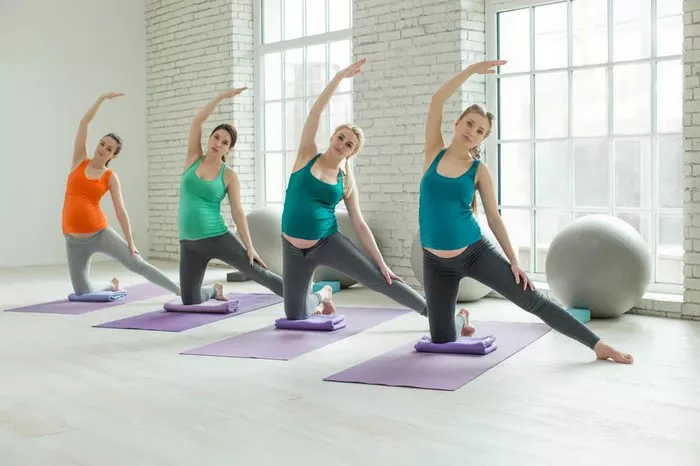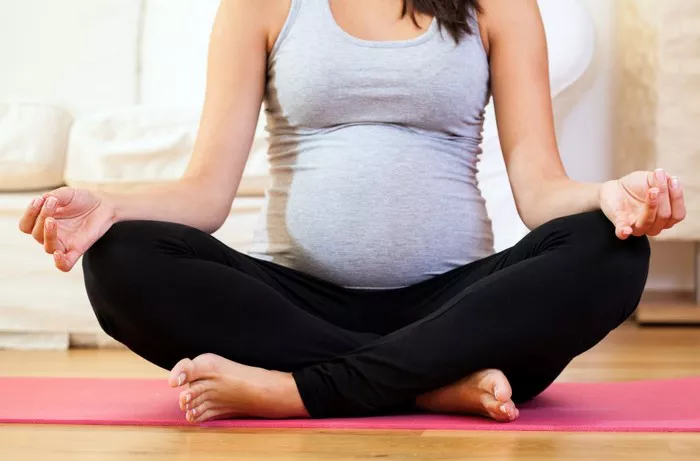Yoga, as an ancient practice, has evolved into a wide range of styles and techniques. From the meditative practices of Kundalini Yoga to the physical intensity of Ashtanga, yoga offers something for everyone, regardless of their goals, fitness levels, or personal preferences. Among the myriad of benefits yoga offers, many people turn to it as an alternative to walking, especially when looking for ways to improve their fitness while promoting mental well-being.
Walking is often praised for its accessibility and its ability to provide a full-body workout that’s easy on the joints. Whether it’s a morning stroll or an afternoon walk in nature, walking offers cardiovascular benefits, improves muscle endurance, and helps maintain flexibility. But for individuals seeking a more holistic, low-impact workout that combines strength, flexibility, and mindfulness, yoga can be an excellent substitute.
In this article, we’ll explore which types of yoga could provide similar benefits to walking. We’ll focus on the key elements of walking – cardiovascular endurance, joint health, muscle engagement, and mindfulness – and examine which yoga styles align with these goals. Additionally, we’ll explore how yoga complements walking, offering benefits that might not be attainable from walking alone.
The Physical Benefits of Walking
Before we dive into yoga styles, it’s important to briefly discuss the physical benefits of walking. Walking is a simple yet effective exercise that delivers several health benefits:
Cardiovascular Health: Walking strengthens the heart, improves circulation, and helps maintain healthy blood pressure levels. It’s a low-impact cardiovascular workout that can be done almost anywhere.
Muscle Engagement and Endurance: While walking, muscles in the legs, hips, and core engage to propel the body forward. It is especially beneficial for the lower body, strengthening and toning the calves, thighs, and glutes.
Joint Health: Walking is a low-impact activity, meaning it’s gentle on the joints, reducing the risk of injury while still promoting joint mobility.
Mindfulness and Mental Clarity: Many people use walking as a time to clear their minds, meditate, or simply connect with nature. The rhythmic nature of walking offers mental clarity and relaxation.
With these benefits in mind, let’s examine which types of yoga can be considered equal to walking in terms of their physical and mental effects.
Yoga Styles That Are Comparable to Walking
Hatha Yoga
Hatha Yoga is one of the most accessible and widely practiced forms of yoga. It encompasses a broad range of practices that focus on physical postures (asanas), breathing techniques (pranayama), and meditation. Hatha Yoga emphasizes slow, controlled movements and deep breathing, which can be easily adapted to suit beginners and those looking for a low-impact workout.
Cardiovascular Health: While Hatha Yoga may not have the same rapid pace as walking, it helps promote cardiovascular health by encouraging deep breathing and proper circulation. The focus on conscious breathing can also enhance lung capacity, which supports endurance in daily activities.
Muscle Engagement: Much like walking, Hatha Yoga engages various muscle groups. While walking primarily focuses on the legs and core, Hatha Yoga also works the arms, shoulders, and back, offering a more balanced full-body workout. Certain poses, like Downward Dog, Warrior poses, and Mountain pose, engage multiple muscle groups simultaneously.
Joint Mobility: Hatha Yoga’s gentle stretches promote joint mobility and flexibility, which is particularly beneficial for those with stiff or aching joints. The movements are slow and deliberate, allowing for proper alignment and reducing the risk of injury.
Mindfulness and Mental Clarity: One of the key components of Hatha Yoga is mindfulness. The practice encourages practitioners to stay present and focused on their breath and body, creating a meditative effect similar to walking in nature or a mindful stroll through the park.
While Hatha Yoga may not elevate your heart rate in the same way that brisk walking does, it does provide a similarly low-impact, full-body workout that improves cardiovascular health, enhances flexibility, and supports joint mobility.
Vinyasa Yoga
Vinyasa Yoga is a more dynamic and flowing style of yoga that links breath to movement. Unlike Hatha Yoga, which typically involves slower and more deliberate movements, Vinyasa Yoga features a continuous flow of poses performed at a faster pace. This style of yoga can offer cardiovascular benefits similar to walking, especially when practiced at a moderate to fast pace.
Cardiovascular Health: Vinyasa Yoga’s continuous movement increases heart rate, providing a cardiovascular workout that strengthens the heart and improves circulation. It’s an excellent option for those looking for a more intense, aerobic form of yoga while still maintaining a low impact on the joints.
Muscle Engagement: Vinyasa sequences engage muscles throughout the body, especially the core, legs, arms, and back. The constant movement between poses (such as moving from Downward Dog to Cobra) engages muscle groups in a rhythmic way, which promotes endurance and strength.
Joint Health: As with all forms of yoga, Vinyasa is easy on the joints due to its low-impact nature. It can also help improve joint flexibility, reducing stiffness and promoting better mobility.
Mindfulness and Mental Clarity: Vinyasa Yoga emphasizes synchronization of breath with movement, which encourages mindfulness and mental clarity. The rhythmic flow of poses provides a moving meditation experience that can calm the mind, similar to the mindfulness gained from walking outdoors.
Vinyasa Yoga can be a great option for those seeking a cardiovascular workout that also improves strength, flexibility, and mental well-being, closely mirroring the effects of brisk walking.
Slow Flow Yoga
Slow Flow Yoga is a style of yoga that blends elements of Vinyasa Yoga with a slower, more deliberate pace. As the name suggests, Slow Flow focuses on a gentle flow of poses, but without the fast transitions typically associated with Vinyasa. This style emphasizes mindful movement and breath, offering both the mental and physical benefits of walking.
Cardiovascular Health: While Slow Flow Yoga doesn’t elevate the heart rate as significantly as Vinyasa Yoga, it still provides a moderate level of cardiovascular benefit due to its flowing nature. Practitioners maintain a steady pace, which is beneficial for overall heart health.
Muscle Engagement: Similar to other forms of yoga, Slow Flow Yoga engages the core, legs, arms, and back. The slower pace allows for a deeper engagement with each pose, encouraging muscle strength and endurance.
Joint Health: Slow Flow Yoga allows for controlled movements and deep stretching, making it great for improving joint flexibility and relieving tension in the body. The gentle pace minimizes the risk of overextending or straining muscles.
Mindfulness and Mental Clarity: The slower pace and emphasis on breath awareness create a meditative atmosphere, similar to the mindfulness achieved through walking. It’s a great option for those looking for a more relaxed, reflective practice.
Slow Flow Yoga provides a gentle yet effective alternative to walking, offering a combination of cardiovascular benefits, muscle engagement, joint flexibility, and mental relaxation.
Chair Yoga
For individuals with mobility issues or those looking for a low-impact yoga practice, Chair Yoga can be an excellent option. Practiced while seated in a chair, this style of yoga focuses on gentle stretches and strengthening exercises that target the whole body. While not as physically demanding as walking, Chair Yoga can provide many of the same benefits in a more accessible format.
Cardiovascular Health: Although Chair Yoga doesn’t provide the same cardiovascular benefits as brisk walking, it still helps improve circulation and blood flow. The focus on breathing and gentle movement can enhance cardiovascular function over time.
Muscle Engagement: Chair Yoga targets the same muscle groups as other forms of yoga, including the legs, core, and upper body. The movements may be less intense than walking, but they still promote muscle strength and endurance.
Joint Health: One of the greatest advantages of Chair Yoga is its ability to improve joint flexibility and range of motion, especially for individuals with limited mobility. The seated nature of the practice reduces strain on the joints while still promoting movement.
Mindfulness and Mental Clarity: Like all forms of yoga, Chair Yoga emphasizes breath awareness and mindfulness. Practitioners often report feelings of calm and clarity, similar to the mental benefits of walking.
For individuals with physical limitations or those seeking a gentle introduction to yoga, Chair Yoga provides a low-impact option that offers many of the same benefits as walking, including improved circulation, joint health, and mindfulness.
Yin Yoga
Yin Yoga is a slow-paced style of yoga that targets the deep connective tissues, such as ligaments, tendons, and fascia. Poses are held for longer periods, typically 3 to 5 minutes, allowing for deep stretching and flexibility work. While Yin Yoga may not be as dynamic as walking, it provides numerous benefits for overall physical health.
Cardiovascular Health: Yin Yoga is not a cardiovascular workout in the same sense as walking or more active styles of yoga, but it encourages deep breathing and relaxation, which can help manage stress and lower blood pressure. The deep relaxation aspect of Yin can support long-term cardiovascular health.
Muscle Engagement: Yin Yoga targets the deep layers of muscle and connective tissue, providing a gentle, restorative effect. While it may not build muscle strength as quickly as walking, it contributes to improved flexibility and joint mobility, which are vital for long-term physical health.
Joint Health: Yin Yoga is highly effective for promoting joint flexibility and mobility. The long-held stretches target connective tissue, which helps maintain joint health and flexibility over time.
Mindfulness and Mental Clarity: Similar to the meditative aspects of walking, Yin Yoga encourages deep mental focus and awareness. The long holds in each pose provide ample opportunity for mental clarity, stress relief, and mindfulness.
Although Yin Yoga may not provide the same level of cardiovascular activity as walking, it offers significant benefits for flexibility, joint health, and relaxation. It can be an excellent complementary practice for individuals looking to balance active movement with restorative exercises.
Conclusion
So, which Yoga Is Equal to Walking? While no form of yoga can completely replicate the act of walking, several styles of yoga come close by offering similar physical and mental benefits. For individuals seeking a low-impact workout that promotes cardiovascular health, muscle strength, joint flexibility, and mindfulness, yoga can be a highly effective alternative to walking.
Ultimately, yoga can be a great alternative or complement to walking, particularly for those seeking a more holistic, mindful approach to physical and mental health. Whether you’re looking for a way to enhance your walking routine or seeking a more restorative workout, yoga has something for everyone.
Related Topics:





















